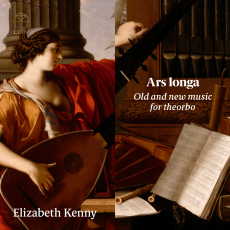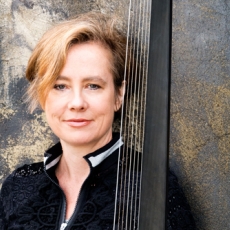Elizabeth Kenny - Ars longa - All Music
4.5*
In use since the late Renaissance and throughout the Baroque era, the theorbo -- a large lute with an extended bass range -- was often employed in basso continuo accompaniment, though unlike the more common harpsichord, was less frequently treated as a solo instrument. Elizabeth Kenny's 2019 release on Linn explores some of the early music for the theorbo, as well as three contemporary works that have been composed in a spirit of reviving its utility. The early pieces of Alessandro Piccinini, Giovanni Girolamo Kapsberger, and Robert de Visée offer excellent examples of the theorbo's general application in the expected forms, whether in free toccatas or more conventional Baroque dances, such as the ciaconna, corrente, and passacaglia, and Kenny shows herself to be adept in the ornate counterpoint that shows the theorbo to be much more than a harmony instrument. The early music movement of the late 20th and early 21st centuries has brought the theorbo back from centuries of obscurity, and the modern works by James MacMillan, Benjamin Oliver, and Nico Muhly show fresh potential for its dark tone colors and vibrant textures. The recording in Cooper Hall, Frome, Somerset gives the room considerable spaciousness, though the sound is focused and detailed, preventing the murkiness that often attends low-range instruments in overly resonant acoustics.

